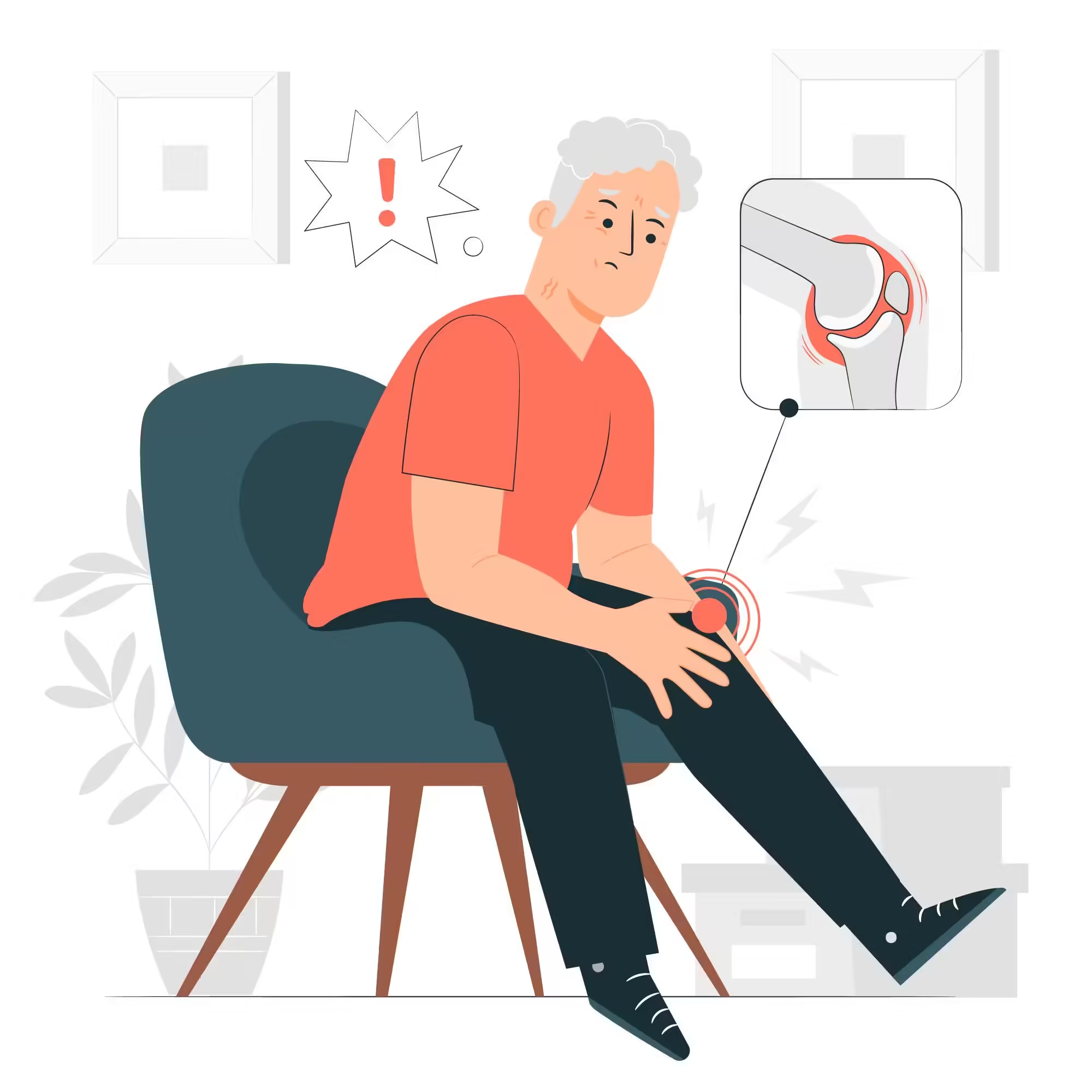What Causes Thigh and Knee Pain After Hip Replacement?
For individuals with significant hip joint degeneration, hip replacement surgery is a frequent technique intended to improve function and relieve discomfort. Even though the results are frequently rather positive, some individuals have knee and thigh pain after the procedure. Comprehending the origins of this discomfort is crucial for efficient handling and recuperation.
Surgical Trauma and Healing Process
The manipulation of the muscles, tendons, and ligaments surrounding the hip during hip replacement surgery may result in transient pain in the knee and thigh. This discomfort normally goes away as the body heals and is a normal component of the healing process.
Changes in Biomechanics
The hip joint’s alignment and mechanics alter following a hip replacement. Pain may result from these modifications to the way the knee and thigh muscles and joints work. Physical therapy can aid in the body’s adaption to the new hip joint, which will take some time.
Muscle Weakness
Muscle weakness following hip replacement surgery is frequent, especially in the hamstrings and quadriceps. Weak muscles may not be able to support the new hip joint sufficiently, which can lead to thigh and knee pain. Rebuilding muscle strength and reducing discomfort require physical therapy and strengthening exercises.
Nerve Irritation
The nerves in the hip and surrounding areas can be irritated during surgery. This irritation can cause referred pain in the thigh and knee. Nerve pain is typically sharp or burning and may require specific treatments such as medications or nerve blocks.
Prosthetic Issues
The hip prosthesis itself may be the source of pain in the thigh and knee in some situations. Pain can be brought on by problems like wear and tear, loosening of the implant, or incorrect alignment. It is imperative to schedule follow-up appointments with the orthopedic surgeon in order to assess prosthesis condition and deal with any issues that may arise.
Overuse and Activity Levels
In order to regain mobility following surgery, patients are advised to increase their level of activity. On the other hand, overuse or jumping into high-impact activities too quickly can cause pain by straining the muscles and joints. It’s critical to adhere to the recovery schedule and raise exercise levels gradually.
Referred Pain
Referred pain occurs when pain is felt in an area distant from the actual source. Hip joint issues can sometimes cause pain to be referred to the thigh and knee due to shared nerve pathways. This type of pain can be challenging to diagnose and may require thorough evaluation by a healthcare professional.
Managing Thigh and Knee Pain After Hip Replacement
-
Physical Therapy: A structured physical therapy program is essential for strengthening muscles, improving joint mechanics, and reducing pain.
-
Pain Management: Medications, such as anti-inflammatory drugs and pain relievers, can help manage pain during the recovery period.
-
Activity Modification: Gradually increasing activity levels and avoiding high-impact activities can prevent overuse injuries.
-
Follow-Up Care: Regular follow-up appointments with the orthopedic surgeon are crucial to monitor the healing process and address any complications.
Conclusion
Thigh and knee pain after hip replacement surgery can stem from various causes, including surgical trauma, changes in biomechanics, muscle weakness, nerve irritation, prosthetic issues, overuse, and referred pain. Understanding these causes and working closely with healthcare professionals can help manage pain effectively and support a successful recovery. If you experience persistent or severe pain, it is important to seek medical advice to identify the underlying cause and receive appropriate treatment.
People also ask
Is it normal to have knee pain after hip replacement?
After hip substitute surgical procedure, humans might also experience pain and soreness around the surgical website online, that can make bigger to the knee vicinity. This pain is commonly because of surgical trauma, tissue infection, and the frame’s natural healing reaction
Is thigh pain normal after hip replacement?
Muscle Strain: The surgical operation itself can encompass incision of muscular tissues and soft tissues across the hip joint. Such wounds take time to heal, and at the begin of the restoration length, some sufferers can sense thigh pain because of increased anxiety in affected muscular tissues
What is the most common pain after hip replacement?
Most human beings revel in some pain after a hip alternative. Pain commonly stages from slight to moderate and may radiate to the thigh. Doctors name post-hip alternative surgical operation pain inside the thigh femoral stem ache. A hip replacement is a commonplace system that replaces a hip joint that is no longer practical






